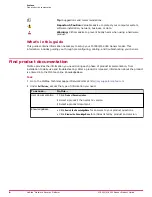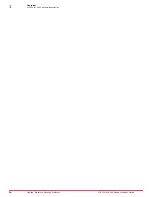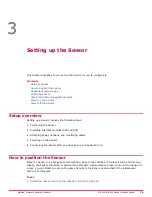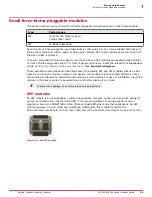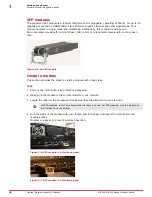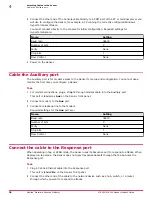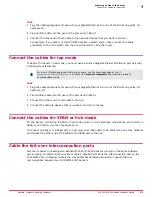
Warnings:
• Read the installation instructions before you connect the system to its power source.
• To remove all power from the Sensor, unplug all power cords, including the redundant power cord.
• Only trained and qualified personnel should be allowed to install, replace, or service this
equipment.
• Before working on the equipment that is connected to power lines, remove all jewelry including
rings, necklaces, and watches. Metal objects will heat up when connected to power and ground,
and can cause serious burns or weld the metal object to the terminals.
• This equipment is intended to be grounded. Ensure that the host is connected to earth ground
during normal use.
• Do not remove the outer shell of the Sensor. Doing so will invalidate your warranty.
• Do not operate the system unless all cards, faceplates, front covers, and rear covers are in place.
Blank faceplates and cover panels prevent exposure to hazardous voltages and currents inside the
chassis, contain electromagnetic interference (EMI) that might disrupt other equipment and direct
the flow of cooling air through the chassis.
• To avoid electric shock, do not connect safety extra-low voltage (SELV) circuits to
telephone-network voltage (TNV) circuits. LAN ports contain SELV circuits, and WAN ports contain
TNV circuits. Some LAN and WAN ports both use RJ-45 connectors. Use caution when connecting
cables.
• This equipment has been tested and found to comply with the limits for a Class A digital device,
pursuant to Part 15 of the FCC Rules. These limits are designed to provide reasonable protection
against harmful interference when the equipment is operated in a commercial environment. This
equipment generates, uses, and can radiate radio frequency energy, and if not installed and used in
accordance with the instruction manual, might cause harmful interference to radio communications.
Operation of this equipment in a residential area is likely to cause harmful interference, in which
case the users will be required to correct the interference at their own expense.
• Refer to the Appendix for information on regulatory, compliance, and other safety requirements.
About fiber-optic ports
The Sensor uses fiber-optic connectors for its Monitoring ports. The connector type is a small
form-factor pluggable (SFP) fiber optic connector that is LC-duplex compatible.
Note the following:
• Fiber-optic ports (for example, SFP/XFP, FDDI, OC-3, OC-12, OC-48, ATM, GBIC, and 100BaseFX)
are considered Class 1 laser or Class 1 LED ports.
• These products have been tested and found to comply with Class 1 limits of IEC 60825-1, IEC
60825-2, EN 60825-1, EN 60825-2, and 21CFR1040.
To avoid exposure to radiation, do not stare into the aperture of a fiber-optic port. Invisible radiation
could be emitted from the aperture of the port when no fiber cable is connected.
• Only FDA registered, EN 60825-1 and IEC 60825-1 certified Class 1 SFP laser transceivers are
acceptable for use with the Sensor.
2
Before you install
About fiber-optic ports
16
McAfee
®
Network Security Platform
M-3050/M-4050 Sensor Product Guide





